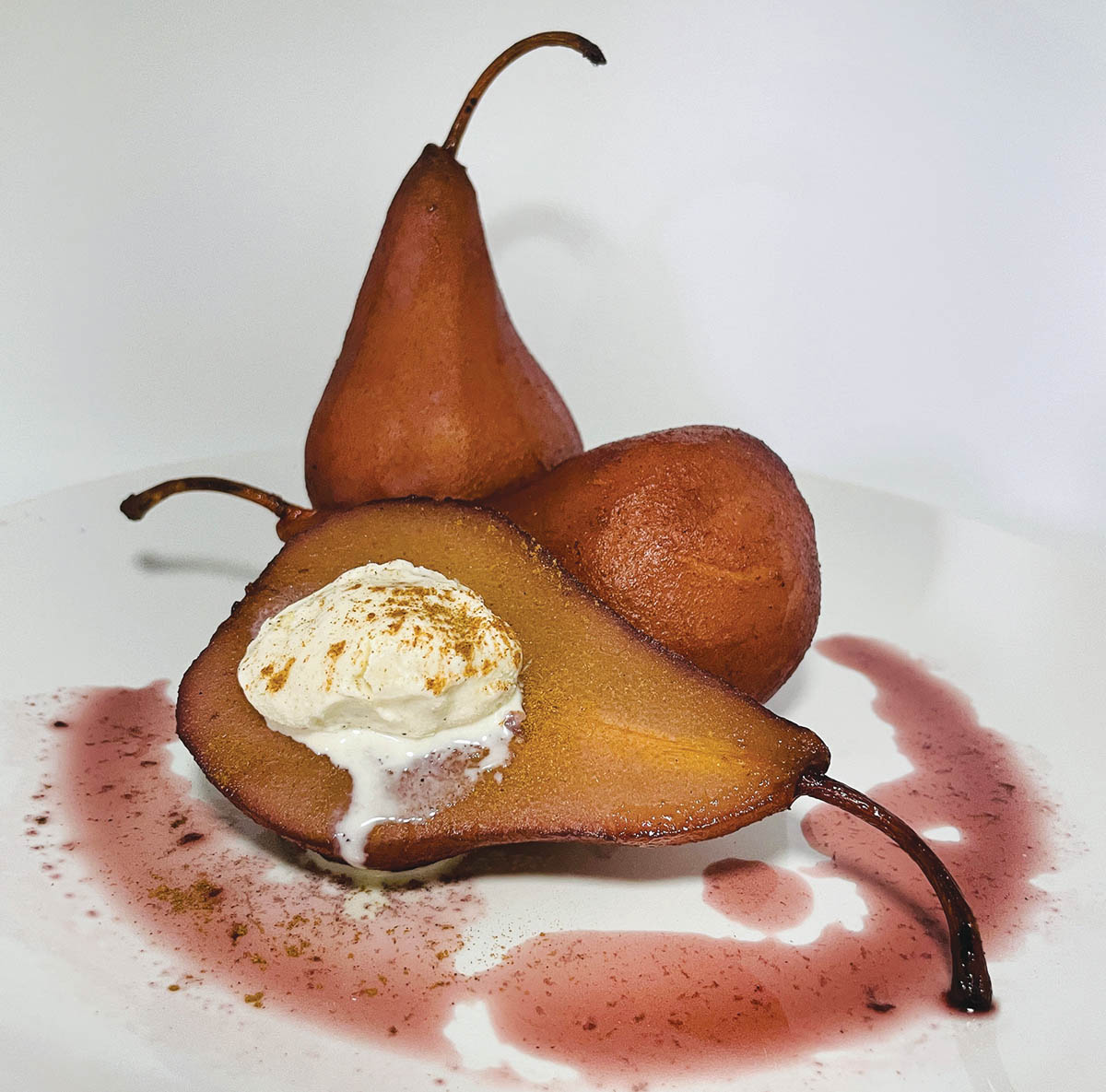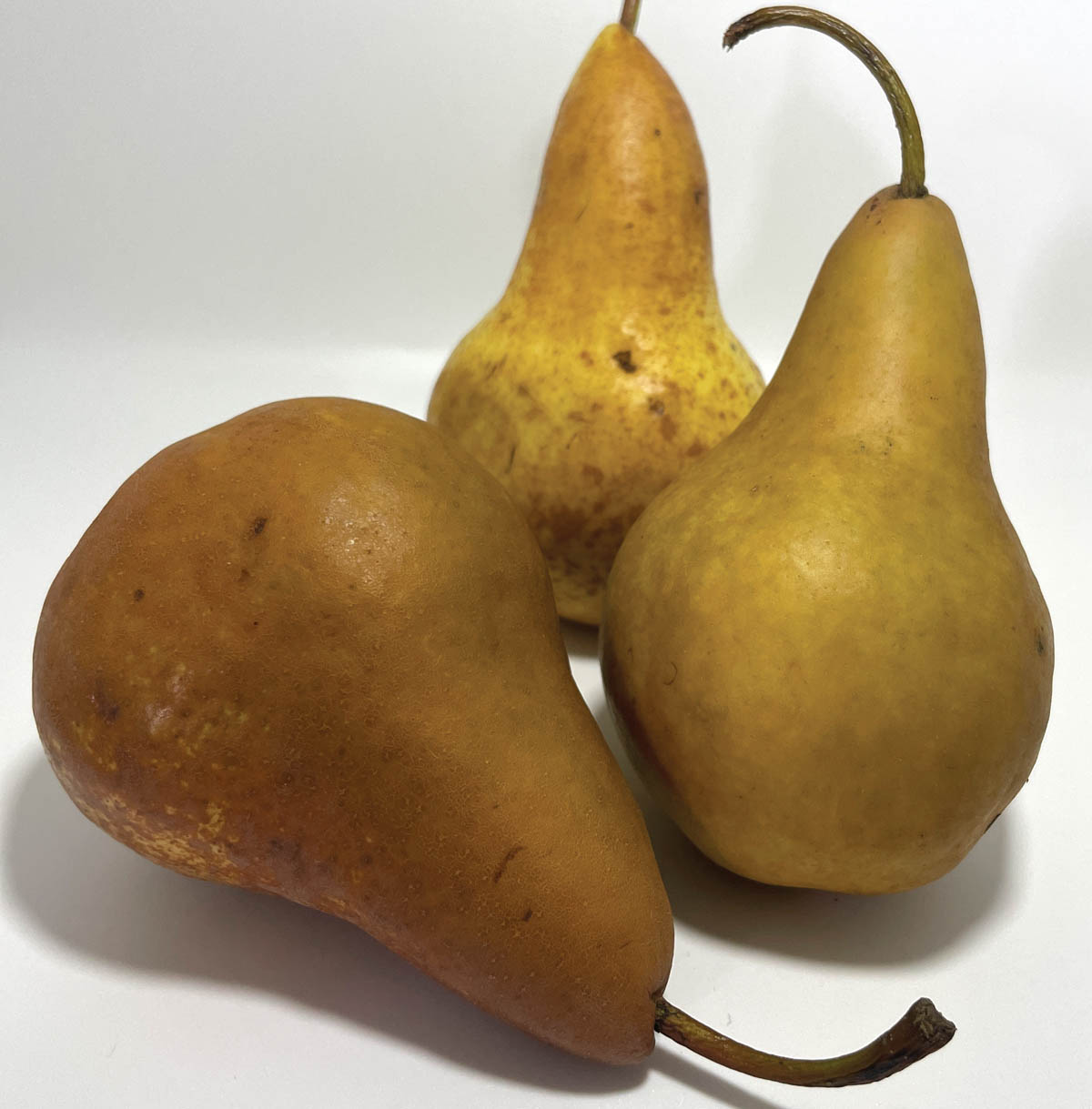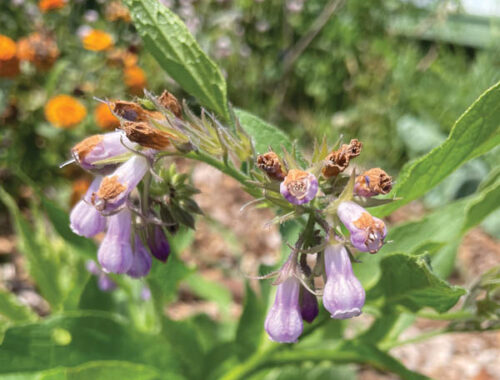
Local Food: The Secret Life of Pears, and a Recipe for Poached Pears
By Brittany P. Anderson

“Just passed a pear tree in Pepe‘ekeo loaded with pears,” read the social media post one sunny morning with an image of a heavily fruiting pear tree. The thread that followed was disbelief, shock, and eager foodies looking for directions to the location. Hawai‘i Island residents are familiar with tropical fruits aplenty, but temperate fruits like pears and peaches are rare, or are they?
Local nurseries increasingly import more non-tropical fruits like apricots, hot climate apples, pears, and apricots. There seems to be a variety worth trying for many of the microclimates on the island. Lower elevation locations do best with heat-tolerant types, while higher elevations accommodate low-chill fruits.
Pear trees come in various sizes, including dwarf trees, full-sized trees, and shrubs. Most fruit trees are grafted to ensure the fruit is of a specific variety and quality. Grafting is when one type of plant is physically joined with another, then growing as one. The base is called a rootstock, and the upper part of the graft is called a scion. Grafting is essentially cloning a tree to guarantee characteristics like hardiness and type of fruit.
Asian pears are gaining popularity among home orchards across the island from Kamuela to Ocean View. The spherical-shaped Asian pear has an apple-like crispness and mild sweet juicy flavor. Asian pears are said to be easy to grow and, once established, are bountiful.
Bartlett pears are the most widely known and sold pear in the world. They have the classic “pear shape” and yellow or red skin with slightly grainy white flesh. There have been Bartlett pear sightings reported in Hilo, Kurtistown, and South Kona on Hawai‘i Island. But will local Hawai‘i Island pears be stocked in a store near you?
Unfortunately, unless you live next to someone with one of the secret pear trees on Hawai‘i Island, you may find it difficult to purchase locally grown pears, at least for now.
Selecting and ripening pears is the key to an excellent eating experience. Choose pears with uniform skin, without blemishes, and no soft spots or bruises. Let pears ripen at room temperature outside of the refrigerator but check it daily for ripeness. A pear is ripe when you press a finger gently into the top of the pear where the stem joins the fruit. If it just starts to give there, the pear is ripe.
If you can acquire just a few of the secret pears, you may want to keep your source close to your chest, especially after making this delicious cranberry juice poached pear recipe. Usually, pears are poached with spices in wine, rum, or cider, but while this recipe omits the boozy nature of the dish, it doesn’t skimp on flavor.

Cranberry Juice Poached Pears
4 large pears
3 cups cranberry juice, sweetened by fruit juices is best
1/2 inch piece of ginger
1/4 tsp cinnamon
Method
Put cranberry juice, ginger, and cinnamon in a large pan or pot. Peel the pears and add to the juice and spice mixture. Bring to a boil, then reduce the heat to a light simmer. Spoon juice over the tops of pears if they stick out. Cook for 15 minutes or until pears are just soft. Remove the pears from the pan, then increase the juice mixture to a light boil. Boil for around 15 minutes until the juice reduces and becomes a light syrup. Slice pears in half, removing the core and any seeds present. Plate the pears, then add a scoop of ice cream like locally made vanilla, maple walnut, or ginger to compliment the dish. Drizzle the syrup over the ice cream and pears, serve immediately. Enjoy!



